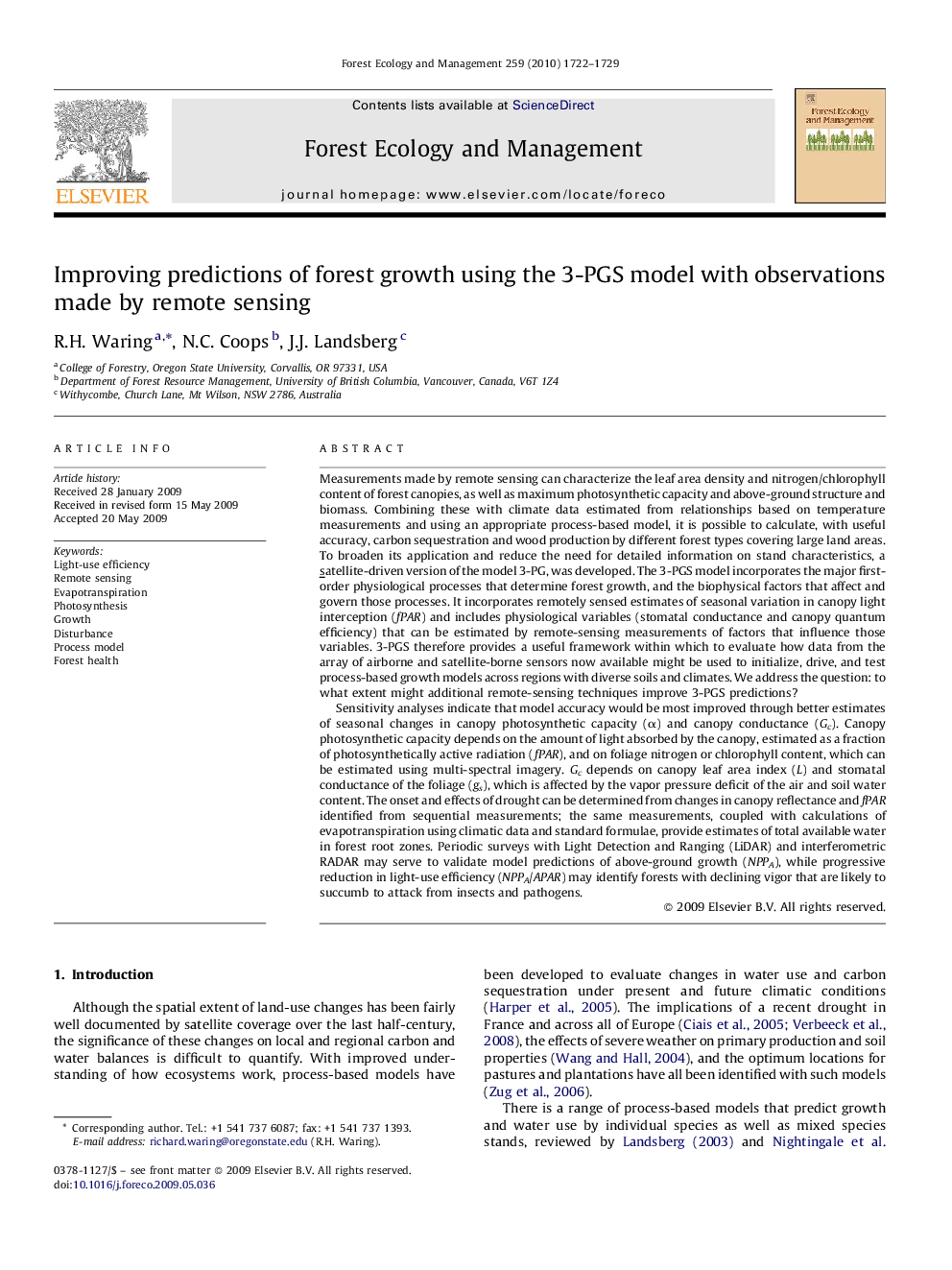| کد مقاله | کد نشریه | سال انتشار | مقاله انگلیسی | نسخه تمام متن |
|---|---|---|---|---|
| 88443 | 159303 | 2010 | 8 صفحه PDF | دانلود رایگان |

Measurements made by remote sensing can characterize the leaf area density and nitrogen/chlorophyll content of forest canopies, as well as maximum photosynthetic capacity and above-ground structure and biomass. Combining these with climate data estimated from relationships based on temperature measurements and using an appropriate process-based model, it is possible to calculate, with useful accuracy, carbon sequestration and wood production by different forest types covering large land areas. To broaden its application and reduce the need for detailed information on stand characteristics, a satellite-driven version of the model 3-PG, was developed. The 3-PGS model incorporates the major first-order physiological processes that determine forest growth, and the biophysical factors that affect and govern those processes. It incorporates remotely sensed estimates of seasonal variation in canopy light interception (fPAR) and includes physiological variables (stomatal conductance and canopy quantum efficiency) that can be estimated by remote-sensing measurements of factors that influence those variables. 3-PGS therefore provides a useful framework within which to evaluate how data from the array of airborne and satellite-borne sensors now available might be used to initialize, drive, and test process-based growth models across regions with diverse soils and climates. We address the question: to what extent might additional remote-sensing techniques improve 3-PGS predictions?Sensitivity analyses indicate that model accuracy would be most improved through better estimates of seasonal changes in canopy photosynthetic capacity (α) and canopy conductance (Gc). Canopy photosynthetic capacity depends on the amount of light absorbed by the canopy, estimated as a fraction of photosynthetically active radiation (fPAR), and on foliage nitrogen or chlorophyll content, which can be estimated using multi-spectral imagery. Gc depends on canopy leaf area index (L) and stomatal conductance of the foliage (gs), which is affected by the vapor pressure deficit of the air and soil water content. The onset and effects of drought can be determined from changes in canopy reflectance and fPAR identified from sequential measurements; the same measurements, coupled with calculations of evapotranspiration using climatic data and standard formulae, provide estimates of total available water in forest root zones. Periodic surveys with Light Detection and Ranging (LiDAR) and interferometric RADAR may serve to validate model predictions of above-ground growth (NPPA), while progressive reduction in light-use efficiency (NPPA/APAR) may identify forests with declining vigor that are likely to succumb to attack from insects and pathogens.
Journal: Forest Ecology and Management - Volume 259, Issue 9, 15 April 2010, Pages 1722–1729